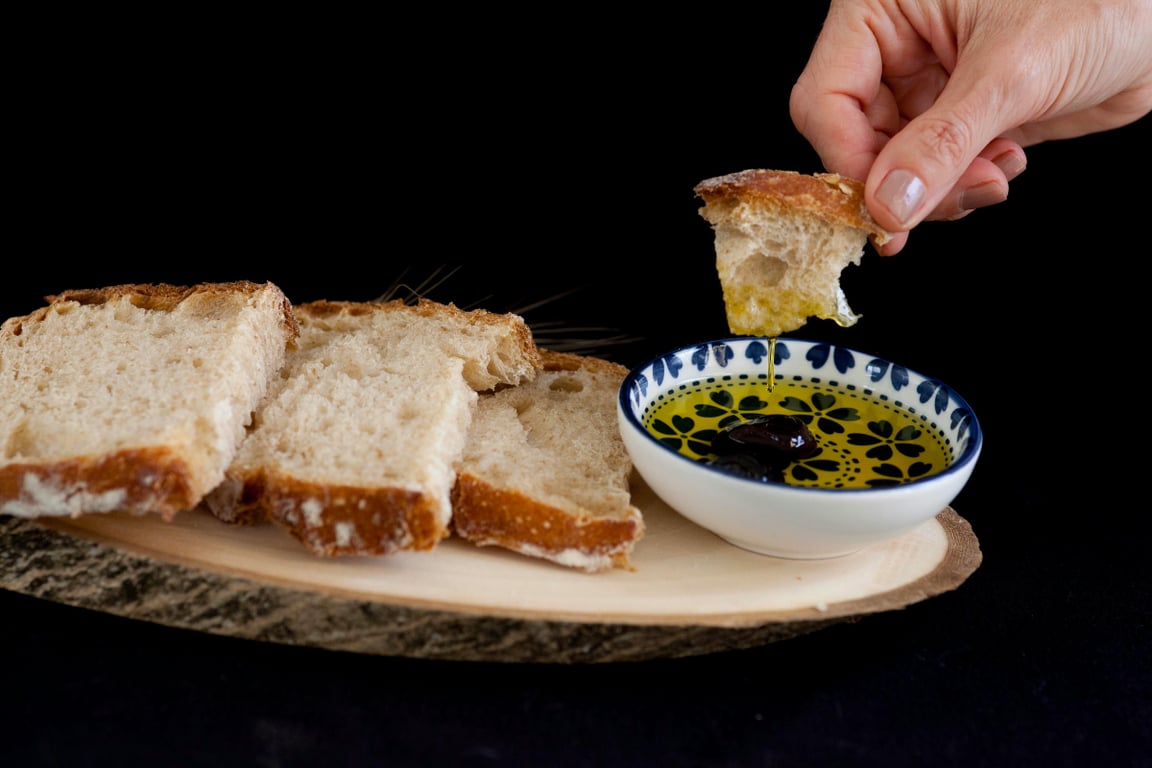Seasonal Olive Oil Dipping Sauce: A Flavorful Twist for Every Occasion

Whether you’re hosting a cozy dinner or just enjoying a quiet evening with a crusty loaf of bread, there’s something deeply comforting about a good dipping sauce. The kind you swirl your bread into, letting the flavors mingle on your tongue before taking that satisfying bite. One of the most timeless—and utterly irresistible—versions is the olive oil dipping sauce: simple, yet so versatile.
Today, we’re exploring a seasonal spin on that classic. Think of it as a restaurant-style olive oil dip elevated with fresh herbs, garlic, a touch of heat, and a bright splash of balsamic vinegar.
Why This Olive Oil Dipping Sauce Works for Every Season
- Spring & Summer: Use fresh basil, parsley, and oregano from your garden for a vibrant, herbaceous flavor.
- Autumn: Add a pinch of red pepper flakes or smoked paprika for warmth, and maybe a drizzle of aged balsamic for depth.
- Winter: Use dried herbs for convenience, but don’t skimp on garlic and olive oil. A warmed bowl of this dip feels like a hug.
No matter the season, the base remains the same: high-quality extra virgin olive oil, aromatics, herbs, and a splash of acid. And, of course, it's perfect for dipping bread. This is not just any olive oil dipping sauce—it’s a simple luxury
Olive Oil Dipping Sauce Recipe
Here’s how to make your own olive oil dipping sauce for bread, with a seasonal twist:
Ingredients
- ½ cup extra-virgin olive oil (use a good-quality one)
- 1 large clove garlic, minced (or 2–3 small cloves)
- 1 teaspoon dried oregano (or 1 Tbsp fresh, finely chopped)
- 1 teaspoon dried basil (or 1 Tbsp fresh)
- 1 teaspoon dried parsley (or a Tbsp fresh)
- ½ teaspoon onion powder (optional, for extra depth)
- ¼ teaspoon red pepper flakes (adjust to your spice preference)
- ¼ teaspoon freshly cracked black pepper
- 1 teaspoon kosher salt (adjust to taste)
- 2 tablespoons aged balsamic vinegar (or more, to taste)
- 2 tablespoons freshly grated Parmesan cheese (optional, but highly recommended)
Instructions
1. Prepare the aromatics. In a small bowl, combine the minced garlic, dried or fresh herbs (such as oregano, basil, and parsley), onion powder (if using), red pepper flakes, black pepper, and salt.
2. Add the olive oil. Pour in the extra virgin olive oil. Stir gently until the herbs and garlic are well distributed in the oil.
3. Let it infuse. Allow the mixture to sit at room temperature for at least 15–20 minutes. This allows the garlic and herbs time to infuse their flavors into the olive oil.
4. Finish with balsamic. Just before serving, slowly drizzle in the balsamic vinegar. Gently swirl or stir to combine. Because oil and vinegar don’t permanently emulsify, you’ll want to re-stir if they separate. This method is very similar to techniques used in classic dipping oil recipes.
5. Add Parmesan (optional). Sprinkle the grated Parmesan cheese on top. Not only does it add a salty, umami punch, but it makes the dip feel more luxurious—reminiscent of restaurant-style bread dipping oil.
6. Serve. Pour the dip into a shallow serving bowl. Serve with warm, crusty bread—such as a baguette, sourdough, or focaccia—and let your guests swirl it generously.
7. Storage. If you don’t use all of the sauce right away, store it in an airtight container in the fridge. Because of the garlic and fresh herbs, it’s best consumed within 3–4 days. (If you made a version without fresh garlic, you can keep the herb-spice mix separate and mix in oil and vinegar only when you serve, which may lengthen shelf life.)
Seasonal Variations & Tips
- Herb swap: Use whatever herbs are in season. In late summer, try basil and thyme. In winter, go for the dried versions.
- Heat: Add more red pepper flakes for a spicy kick. Or balance with ½ teaspoon smoked paprika for a smoky warmth.
- Cheese: Instead of Parmesan, try Pecorino Romano or a soft cheese crumble, such as feta, for a creative twist (similar to how some olive oil dipping oils incorporate cheese).
- Vinegar alternative: If you don’t have balsamic, you can try red wine vinegar or even lemon juice, but balsamic gives that classic sweet-acid richness.
Frequently Asked Questions
Q: What kind of olive oil should I use for this dipping sauce?
A: Use extra virgin olive oil if possible; its flavor is richer and more complex and really shines in a dipping sauce. Using a lower-quality olive oil will make a noticeable difference.
Q: Can I make the olive oil dipping sauce ahead of time?
A: Yes! You can mix the herbs and garlic with oil ahead of time and let it infuse for a few hours or even overnight in the fridge. Add the balsamic vinegar and cheese just before serving for the best flavor.
Q: My oil and vinegar tend to separate; is that normal?
A: Absolutely. Oil and vinegar don’t form a permanent emulsion, so they’ll separate if left to sit. Just stir or swirl again before dipping your bread.
Q: Is olive oil dipping sauce safe to store, considering there’s garlic in the mix?
A: Because fresh garlic in oil can be a risk for botulism if stored improperly, it's best to refrigerate the mixture and consume it within 3–4 days. Alternatively, you can store a dry herb-garlic mix separately and combine it with oil and vinegar just before serving. This is a tip also recommended in similar restaurant-style herb blends.


 Fax : 1-973-799-0901
Fax : 1-973-799-0901 Call us now: +1 408-464-9048
Call us now: +1 408-464-9048




